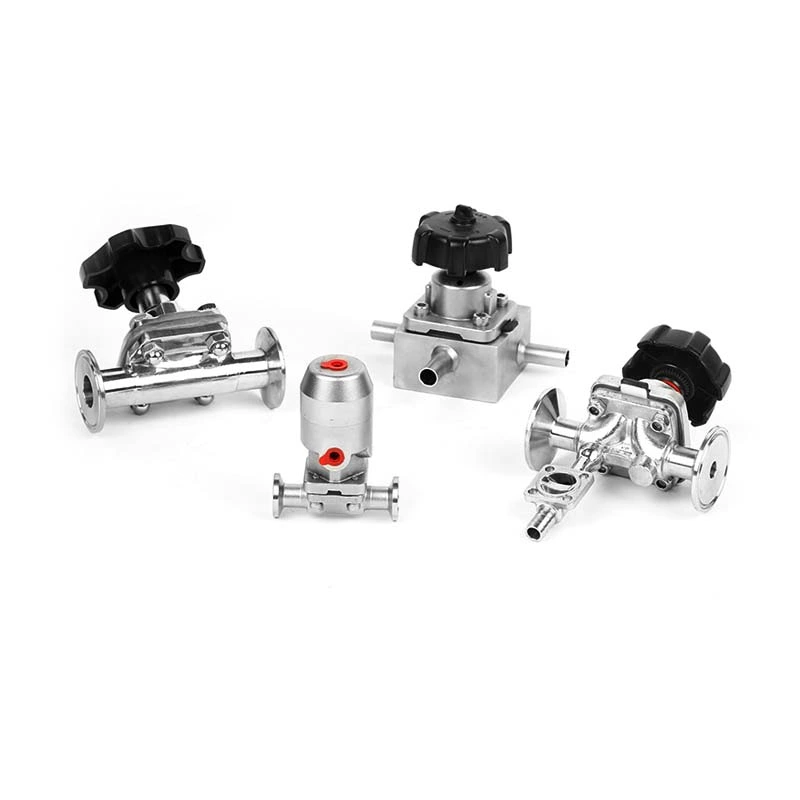Installation And Maintenance Of Manual Diaphragm Valve
Sanitary Diaphragm Valve is a new type of valve with tail valve and sterilization function, a manual (handwheel) driven straight-through stop valve. EPDM diaphragm material, precision cast stainless steel valve body, polished straight-through* channel, and has open and close limit and status display functions. The valve is acid-resistant, alkali-resistant, leak-free, bacteria-free, easy to disinfect and easy to maintain.
Installation and maintenance of manual diaphragm valve:
1. The working environment temperature of the diaphragm valve is -20℃~+60℃, and the relative humidity is not more than 90% to ensure that the rubber of the valve does not age.
2. When installing the valve, there should be a certain space around it to facilitate the assembly, disassembly, transportation and repair of the valve, so as to ensure convenient observation, adjustment and operation.
3. When storing the film and diaphragm, they should be packed in cloth bags and placed on wooden shelves. At the same time, they should be avoided from direct sunlight and contact with ozone, and should not be piled with heavy objects.
4. When storing, the valve should be in a fully open state (that is, to ensure that the diaphragm is in a stress-free state, especially for spring-closed diaphragm valves). The two flange end faces of the valve should be sealed with paper to prevent moisture and dirt from entering.
5. For valves installed underground, the convenience of operation should be taken into consideration. An extension shaft or T-type wrench can be used for operation.
6. The valve can be installed at any angle within 360°. When it is at an angle of 15° with the horizontal, the valve can also be guaranteed to flow freely. When it is installed above the head, it can also be operated with a connecting rod.
7. Large-diameter valves must be supported when installed. When the valve is not installed vertically, the center of gravity moves out of the center line, which is easy to damage the valve, and more support should be added.
8. Before installing the valve, the dirt in the pipeline must be * cleaned. After installation, the valve should be in a fully open position to remove the dirt in the valve and test the sealing of the connection.
9. When using the valve, it should not be closed excessively. Once the diaphragm presses the weir surface of the valve body, it can be closed. For starting the valve, the opening speed should not be too fast. If the speed is too fast, the load will be fully applied to the diaphragm screw, which will damage the diaphragm.
10. When replacing the valve, the two fluids of the valve should be cut off (that is, the valves on both sides of the pipeline should be closed). At the same time, personnel protection should be done to prevent damage to people by corrosive fluids, such as protective clothing or masks and gloves for workers.
